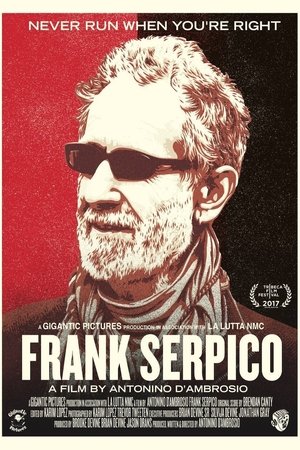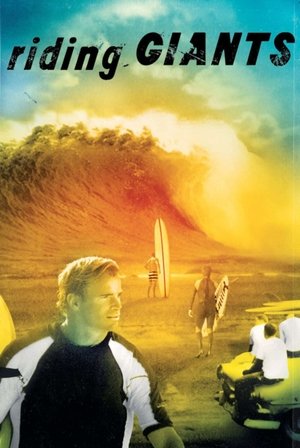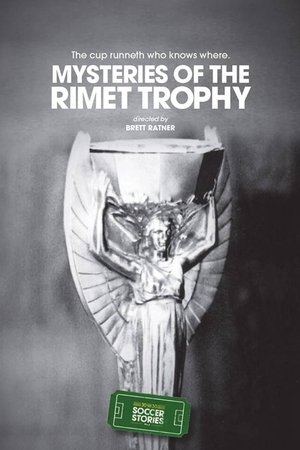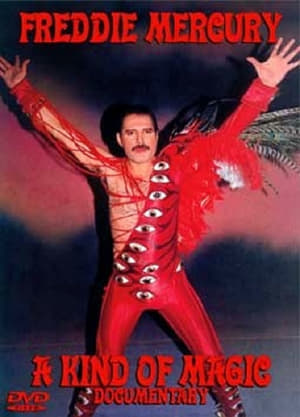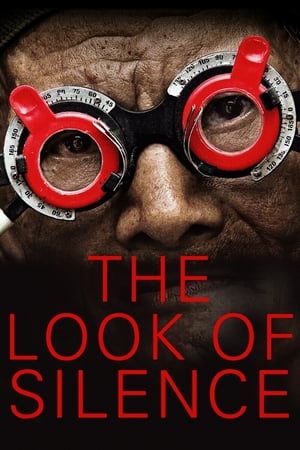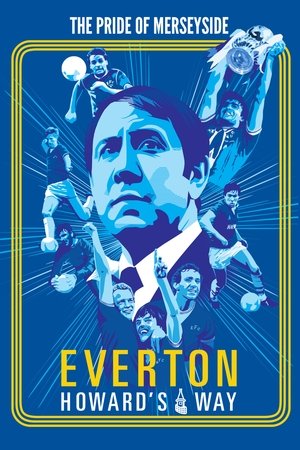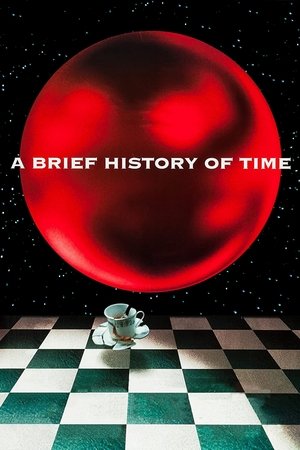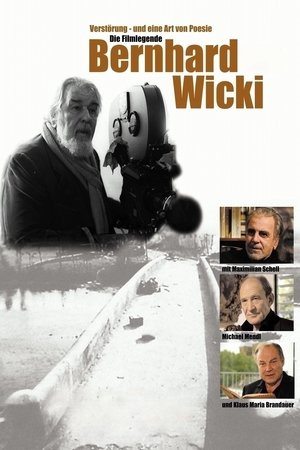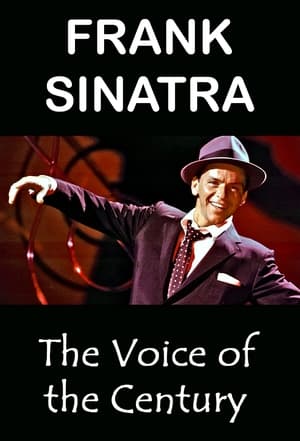Overview
Constructed from over 500 hours of never-before-seen footage, this documentary centers on the personal life and career of the controversial football player Diego Maradona who played for SSC Napoli and Argentina in the 1980s.
Reviews
**_A fitting tribute to perhaps the greatest of all time - in all his genius, sagacity, hedonism, and excess_**
> _My mother thinks I am the best. And I was raised to always believe what my mother tells me._
- Diego Maradona
> _In Argentine football there is a before and after Maradona._
- Julio Grondona
> _What Zidane can do with a football, Maradona could do with an orange._
- Michel Platini
> _Even if I played for a million years, I'd never come close to Maradona. Not that I'd want to anyway. He's the greatest there's ever been._
- Lionel Messi
> _I was, I am, and_ _I always will be a drug addict. A person who gets involved in drugs has to fight it every day._
- Diego Maradona
In _Senna_ (2010), director Asif Kapadia essentially established a new style of documentary filmmaking - using only archive footage, with no talking heads, playing the interviews in voiceover only. _Amy_ (2015) was made predominantly the same way, although it did feature a couple of talking heads. This reliance on primary sources, the material that journalists and documentarians use to fashion a story without presenting it directly to the audience, allows Kapadia to establish a direct link to the subject, by eschewing the standard distancing techniques of documentary filmmaking. In his third feature-length documentary, Kapadia maintains the style of his previous work, but turns for the first time to a still-living subject; arguably the greatest footballer to ever lace up a pair of boots, Diego Maradona. I say "arguably", but really, there are only a handful of people with a legitimate claim to that title - Charlie Buchan (1891-1960), Dixie Dean (1907-1989), Stanley Matthews (1915-2000), Tommy Lawton (1919-1996), Nándor Hidegkuti (1922-2002), Alfredo Di Stéfano (1926-2014), Ferenc Puskás (1927-2006), Lev Yashin (1929-1990), Pelé (b.1940), Bobby Moore (1941-1993), Eusébio (1942-2014), Franz Beckenbauer (b.1945), Gerd Müller (b.1945), George Best (1946-2005), Johan Cruyff (1947-2016), Sócrates (1954-2011), Ronaldinho (b.1980), Cristiano Ronaldo (b.1985), and Lionel Messi (b.1987). That's about it.
As famous for his on-field brilliance as his lavish lifestyle and volatility off the pitch, Maradona lived (and continues to live) his controversial life very much in the public eye, whilst maintaining a different personality behind closed doors. A complex web of contradictions (religious but hedonistic; humble but arrogant; frugal but materialistic; respectful but condescending), much as he did with Ayrton Senna, Kapadia depicts Maradona as uniquely and supremely talented, the only person on the planet who could do what he did as well as he did it. And much as he did with Amy Winehouse, Kapadia emphasises that Maradona was only in his early twenties when he found himself with the world at his feet, unable to handle the fame, and charting a course towards an inevitable fall from grace.
But there's another, more important similarity between the trio; all three were destroyed, in one way or another, by their talent - Senna died in a Formula 1 crash in 1990 at the age of 34, Winehouse succumbed to alcohol poisoning in 2011 at the age of 27 after years as an alcoholic and drug addict, and Maradona became a victim of his own success; in the prime of his life, his career imploded amidst legal trouble, vilification in the press, controversy on the field, an illegitimate son, cocaine, bans, and association with the Camorra and people such as Fidel Castro, Hugo Chávez, and Nicolás Maduro. Somehow, he survived it all, going on to manage several teams, including his beloved Argentina, and although the film ends on something of an unnecessary downer, and although the narrow focus on the period from 1984 to 1992 will be sure to disappoint those looking for a more conventional overview of the man, the fact is that it's in those few years where the legend was really born, where it reached its apotheosis, garnering never-before-seen levels of adulation, where it was subsumed by a lifestyle that would make Caligula look parsimonious, and where it ultimately self-destructed.
Made with the cooperation of the man himself, Kapadia was granted access to Maradona's personal video archives, building the film from over 500 hours of never-before-seen footage. This is actually the second time a documentary filmmaker has been allowed into the archives, the first was Emir Kusturica, whose _Maradona by Kusturica _(2008) is a more conventional bio than Kapadia's take on the material. Wisely, Kapadia only uses footage which Kusturica did not, so there's no overlap between the two films. In terms of that video archive, in an era long before mobile phones and social media, how did Maradona amass such a vast collection? It turns out that when he signed for S.S.C. Napoli in 1984, his agent at the time, Jorge Cyterszpiler, hired a camera crew to document every aspect of Maradona's life and career, resulting in a library of footage shot with unprecedented fly-on-the-wall access.
Kapadia and his regular editor Chris King begin the film with some brief biographical material about Maradona's childhood and his time at Asociación Atlética Argentinos Juniors (1976-1981), Club Atlético Boca Juniors (1981-1982), and FC Barcelona (1982-1984), before focusing in on some of the major events of the next eight years - his arrival at Napoli in July 1984 for a then world-record fee of £6.9 million, when he was welcomed at the Stadio San Paolo by 85,000 excited fans; his disappointing first season, with Napoli finishing eighth in Serie A; the 1986 FIFA World Cup, in which he scored both the greatest goal of all time and one of the most controversial, ultimately leading a very average Argentinian squad to victory; the birth of his illegitimate son, Diego Sinagra, in September 1986; the 1986-1987 Serie A season, where his performances helped Napoli win their first ever league title; his growing association with the Giuliano crime family and his spiralling cocaine addiction; the 1988-1989 UEFA Cup, where he led Napoli to their first ever European title; Napoli's second Serie A title in 1988-1989; the 1990 World Cup, in which Maradona found himself in the unenviable position of lining out for Argentina against Italy at the San Paolo - a pressure-cooker situation that wasn't helped when he said in an interview a few days before the match that Naples wasn't really Italy, and that he expected the Napoli fans to cheer for Argentina rather than their national team; his vilification in the press after scoring the penalty that put Italy out of the World Cup, and the Napoli fans turning on him with a never-before-seen level of vitriol; his April 1991 arrest and 15-month suspension for testing positive for cocaine; and finally, his low-key departure from Napoli for Sevilla FC in July 1992. A _cause célèbre_ on a scale never before seen in football, before they turned on him, Maradona was treated like a god by the passionate Napoli fans, who erected religious icons dedicated to him all over the city, painted his mural on the sides of buildings, and hung pictures of him in their homes, right beside their paintings of Christ.
One of the things the film does exceptionally well is simply to remind us just how insanely talented Maradona was, with a great deal of kinetic footage of him plying his trade. Never the finest physical specimen, he was only 5'5", stocky, and not especially intimidating. However, as is mentioned in the film, his greatest asset wasn't his insane acceleration and speed, his difficult to disrupt low centre of gravity, his physical resiliency (there are countless shots of him being fouled, only to scramble to his feet and keep on going), his dribbling ability, passing ability and/or scoring ability, or even his fabled left foot - it was his brain. His genius was not unlike that which one finds in chess grandmasters; whereas his opponents and teammates could look at a situation and calculate where the ball might be in five seconds, Maradona could look at that same situation and know precisely where the ball would be in ten seconds, maybe in fifteen seconds. His bursts of speed were unlike anything the sport had ever seen, nor has there been anything comparable since, but it wasn't just that he could waltz past defenders like they weren't even there, it was his ability to choose exactly the path he needed to take to put himself in the best possible position after he'd passed them. The pitch-level footage Kapadia has chosen illustrates this brilliantly, as Maradona moves with a dexterity and grace belying his appearance, and suggesting he has mastered time and space, bending the continuum to his will. If you've never seen him play, prepare to be truly amazed.
As one would expect from Kapadia, the aesthetic design of _Diego Maradona_ is exceptional. The opening scene is especially attention-grabbing - set to a pounding disco soundtrack, the film begins with what appears to be a car chase through the streets of Naples, like a cross between Peter Collinson's _The Italian Job_ (1962) and William Friedkin's _The French Connection_ (1971). Racing through narrow streets at breakneck speeds, the scene is shot from within one of the cars, and is intercut with snippets mapping out Maradona's childhood in the Villa Fiorito shantytown, his early professional career, his arrival at Barcelona in June 1982, his ankle break in September 1983, and his departure for Napoli in 1984. In this sense, the montage and the 'car chase' dovetail into one another, because what we're actually looking at is Maradona's first arrival at Napoli, his journey to the Stadio San Paolo on July 5. It's an unexpectedly frenetic opening to a documentary about a footballer, speaking subtly to the excess and fast living to come.
This idea of foreshadowing darker times ahead continues in the presentation of his chaotic press conference later that day, when a journalist asked him if he was worried about Camorra influence at the club, only for club president Corrado Ferlaino to demand the journalist be removed, and a brawl nearly breaking out. And as with the opening scene, the chaos of this moment will find many parallels over the next eight years. Also impressive is how Kapadia distils much of the weight of Maradona's career down to that decisive penalty against Italy in 1990. Fiction films about football often end with a penalty kick because it's really the only part of a game that can be dramatised and played for tension - think of films as varied as John Huston's _Escape to Victory_ (1981) and Maria Giese's _When Saturday Comes_ (1996), both of which feature climatic penalties. Here, the penalty is real, as is its symbolic cultural significance, although it certainly doesn't spell the end of the story.
One of the reasons the clips of Maradona on the pitch work so well is because of the excellent sound design - every tackle is accompanied by a thud, every fall by a crunch, every kick of the ball by a deadweight thunk. Every contact is given weight and unexpected impact, adding an impressively constructed element of subjectivity to the material - we hear it as Maradona himself may very well have heard it. It really helps sell the immediacy of the footage, which is miles away from the more distanced and sanitised coverage we're used to on TV. Indeed, Kapadia's decision to focus almost exclusively on choppy pitch-level footage over the more objective shots used for broadcast is one of the most successful elements of the film – really working towards selling the experience of actually being on the pitch in front of 80,000 fans.
As the eagle-eyed amongst you will have noticed, unlike both _Senna_ and _Amy_, _Diego Maradona_ includes both first name and surname in its title, and whilst this might seem like a superficial element, it's actually of huge thematic importance. The film's central conceit is that Diego Maradona was, in essence, two personas; there was the quiet and unassuming street kid who just wanted to help his family and have fun (Diego), and there was the global superstar, with a different Rolex for every day of the week and women whenever he wanted (Maradona). The film posits that Maradona was a construct built by Diego to help him deal with his fame and the concomitant pressure, essentially acting as a shield so Diego could feel safe. The problem, however, as several people attest, was that over time, Maradona began to take over from Diego, even away from the cameras, and as Diego receded further and further into the shadows, Maradona became increasingly unpleasant and self-absorbed. It's a fascinating way into his psychology and a deceptively simple bit of extremely revealing psychoanalysis.
The main theme in the film is that Maradona's skill made him a god, but what happens when a god comes crashing down to earth, exposed as a mere mortal, a flawed human, just like the rest of us. Perhaps wisely, Kapadia doesn't focus on any one incident as breaking Maradona, suggesting instead that his illegitimate son, the 1990 World Cup, the cocaine addiction, the Camorra ties, the suspension, all had a cumulative effect, and it was the totality that nearly destroyed him. However, Kapadia is clear that the downward spiral began in 1986 with the birth of Diego Sinagra, whom he wouldn't acknowledge as his son until 2016. Drawing attention to the media frenzy that resulted when Cristiana Sinagra revealed the affair, Kapadia ensures to let us know that his wife, Claudia Villafañel, was pregnant with a child of her own during the scandal, whilst Maradona adopted a policy of deny, deny, deny. In relation to the Argentina-Italy game, whilst Kapadia is unequivocal that the Napoli fans overreacted, turning on their hero because he dared to play for his national team, he is also clear that Maradona's calamitous pre-game interview didn't help matters. In this sense, although Kapadia flirts with the image of Maradona as a man betrayed by an intrusive press and a fickle public, ultimately it presents him as neither hero nor villain, but as someone caught up in a hurricane partly of his own making.
In terms of problems, perhaps the most obvious one is how narrowly focused the film is, with a good 90% set during his tenure at Napoli. Some brief time is given over here and there to his early years and his closeness to his parents, but it's relatively spartan and leaves you yearning for more. For example, the film barely touches on the infamous brawl that Maradona instigated (albeit after he was incessantly provoked) in the 1984 Copa del Rey final contested by Barcelona and Athletic Bilbao, a brawl which involved every player on each team, most of the subs, many of the coaching staff, and even ground staff, and which led to the fans throwing objects at the players and at one another, ultimately resulting in 60 injuries, all in front of King Juan Carlos I. Some footage is shown, but there's no context. What happened had its origins several months previously when Maradona suffered a broken ankle after a bad tackle from Andoni Goikoetxea Olaskoaga. The break briefly threatened his career, and during the final, Goikoetxea repeatedly fouled and taunted Maradona. None of this is explained in the film. There's also only the briefest of mentions of the 1994 World Cup, when he failed another drug test (this time for ephedrine) and was sent home in disgrace, never to play for Argentina again. Likewise, there's nothing whatsoever on his coaching career, during which time he took Argentina to the 2010 World Cup. The film is also relatively silent on why the rest of Italy felt such disdain for Naples and Napoli (some of the chants are truly epic). We're told about and shown the hatred, but there's nothing about where that hatred came from or why it was so pronounced. The film also ends on an uncessarily downbeat note, with Maradona overweight and disillusioned, tearfully confessing his many transgressions on Argentinian TV. Such an ending was entirely avoidable given that the man is still alive and seems to be holding his demons at bay.
This aside, however, _Diego Maradona_ is another exceptional documentary from one of the world's finest documentarians. The trump card is splitting Maradona's persona into two constituent parts – hedonistic superstar and unassuming family man – essentially mapping out the difference between the person and the cult of personality. Avoiding hagiography, the film paints him as far from perfect, but so too is it a fitting tribute to, for my money, the greatest player who will ever play the game. A man whose hubris and arrogance nearly destroyed him, nothing he did off the pitch will ever nullify his perfection on it. Ultimately, the film is about how exceptionalism can corrupt, with every misstep he made writ large for all to see. Kapadia translates his chaotic career into compelling drama, and ultimately guides it to the same location to which he took _Amy_ and, to a lesser extent, _Senna_ - a story about an individual which speaks to the volatility and fickleness of fame, with one eye on the corruptive potential of genius. But more than that, it charts what can happen when these two elements combine, creating a perfect storm that may allow for moments of transcendent brilliance, but which ultimately exacts a very steep price.

 130 min
130 min
 7.425
7.425
 2019
2019
 United Kingdom
United Kingdom
 Stephen Campbell wrote:
Stephen Campbell wrote:
